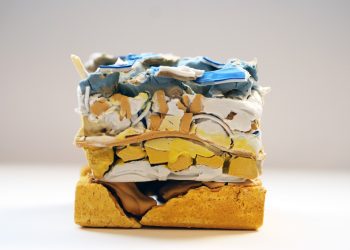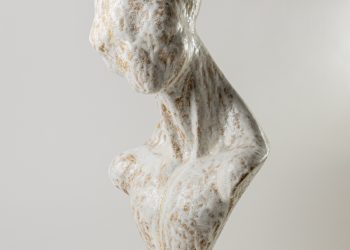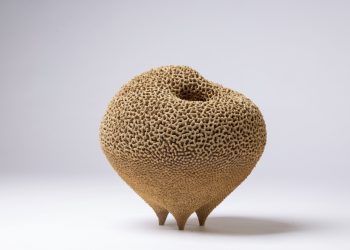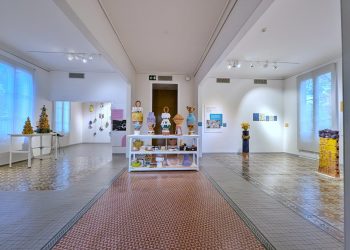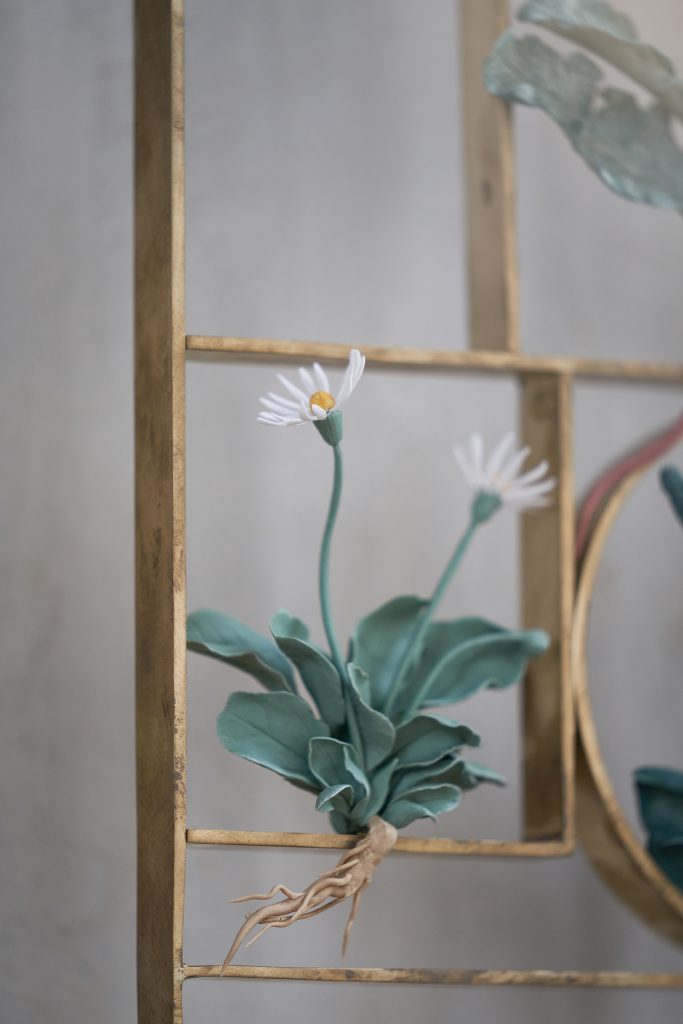
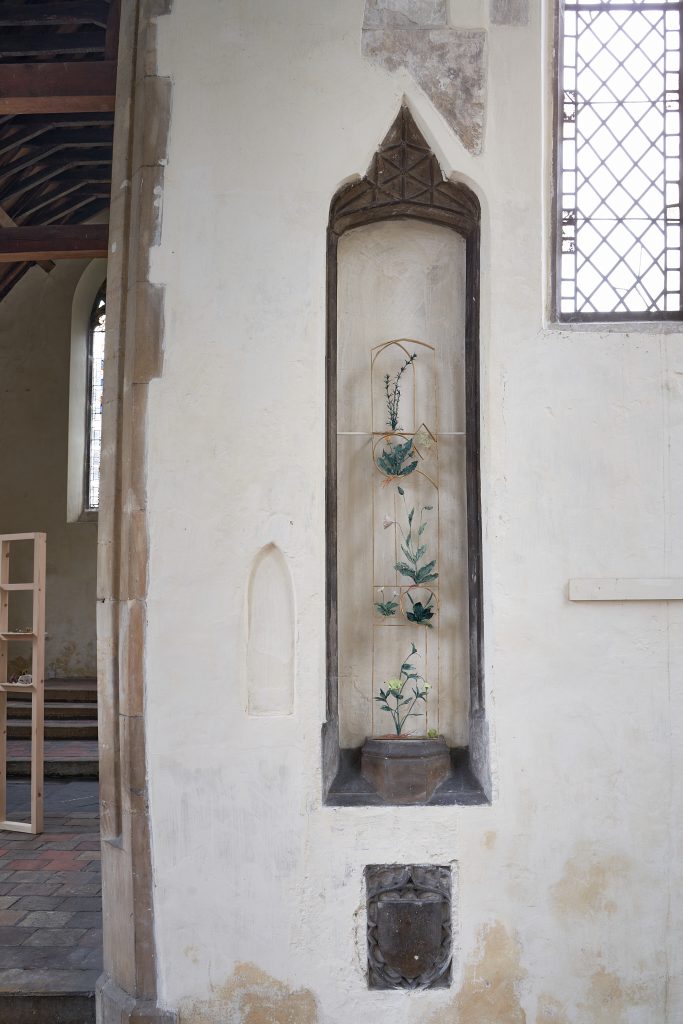
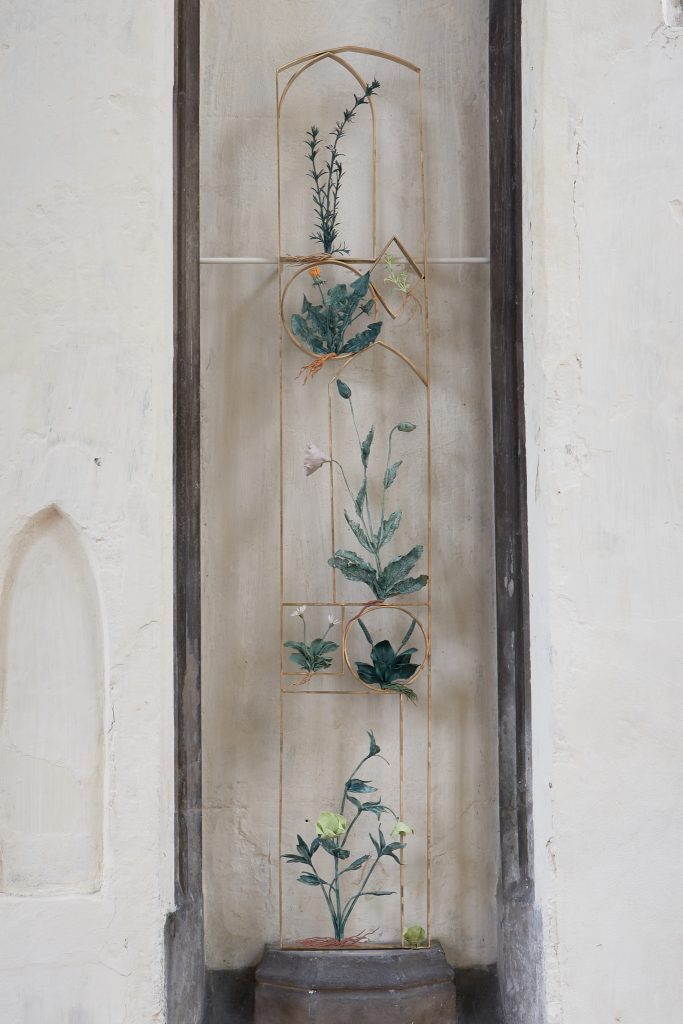
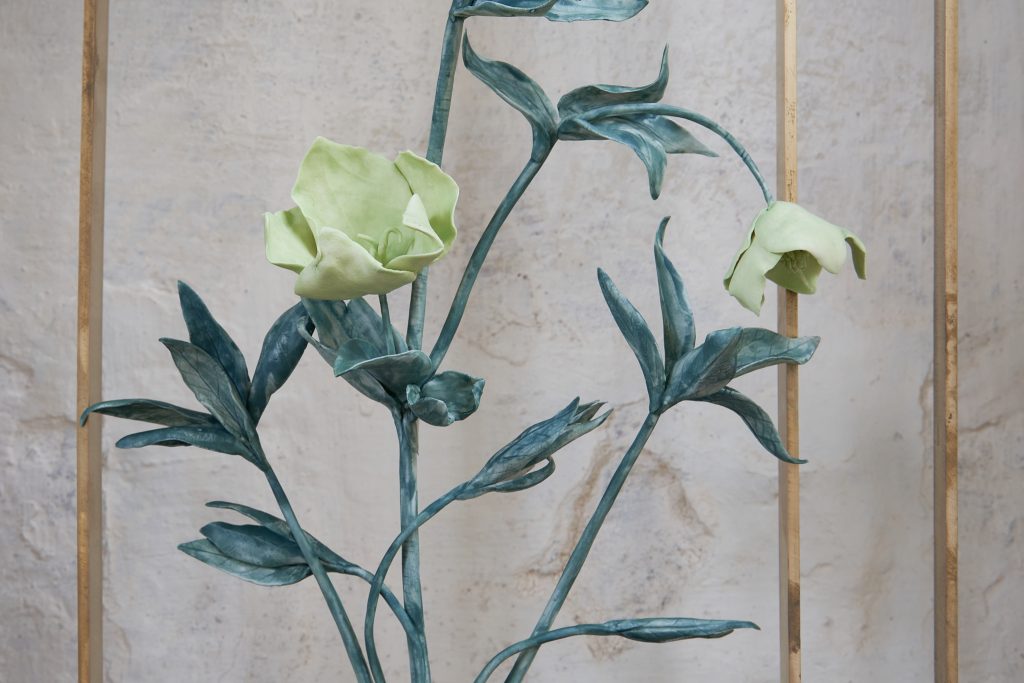
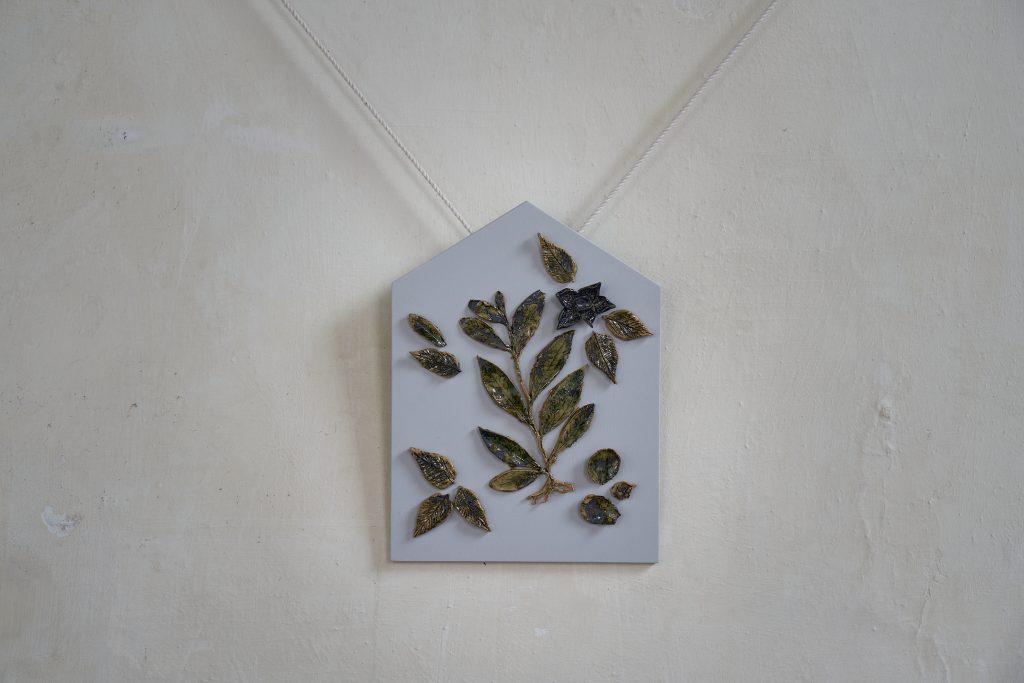
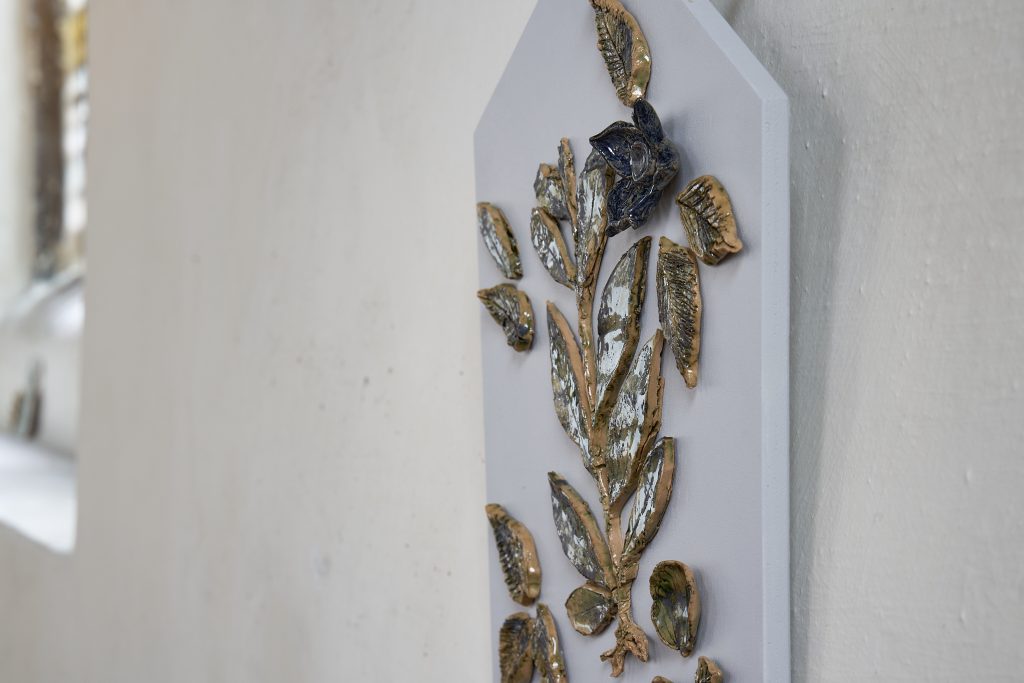
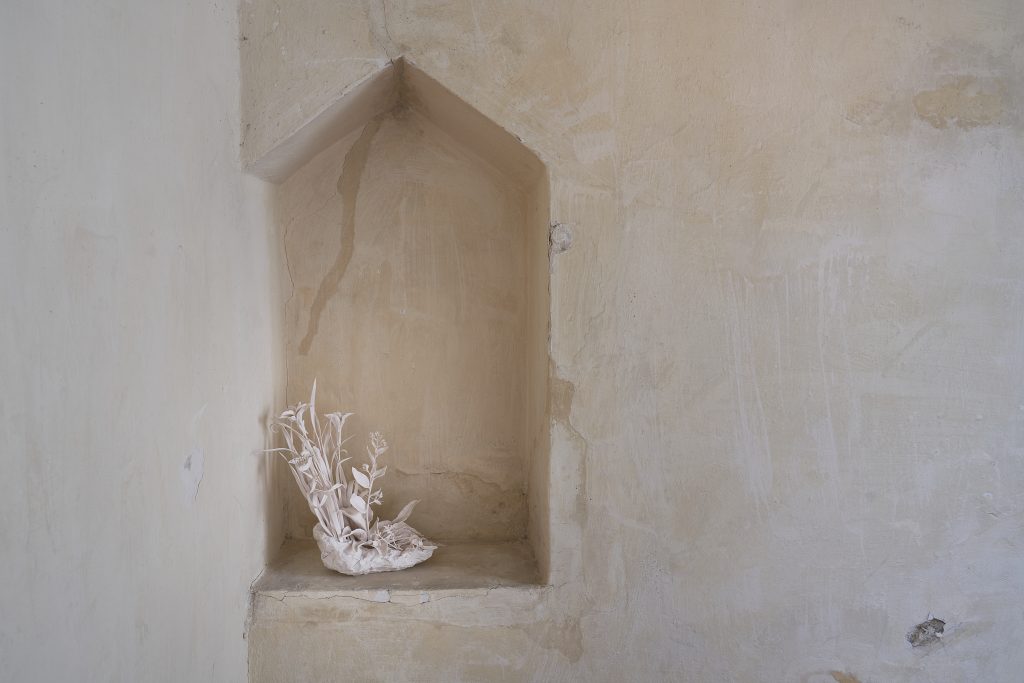
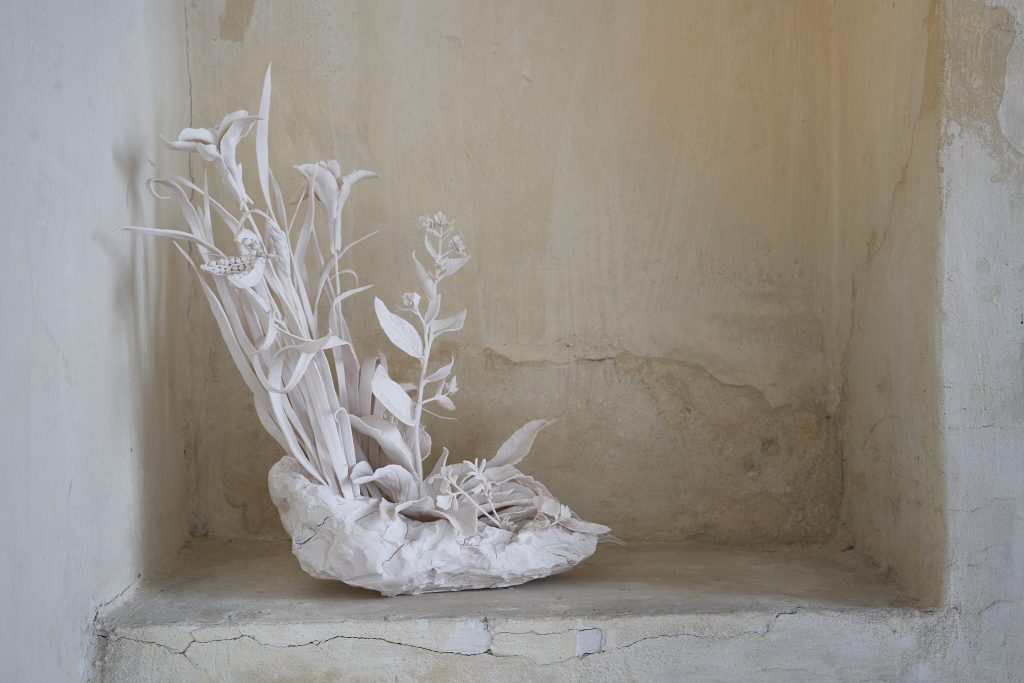
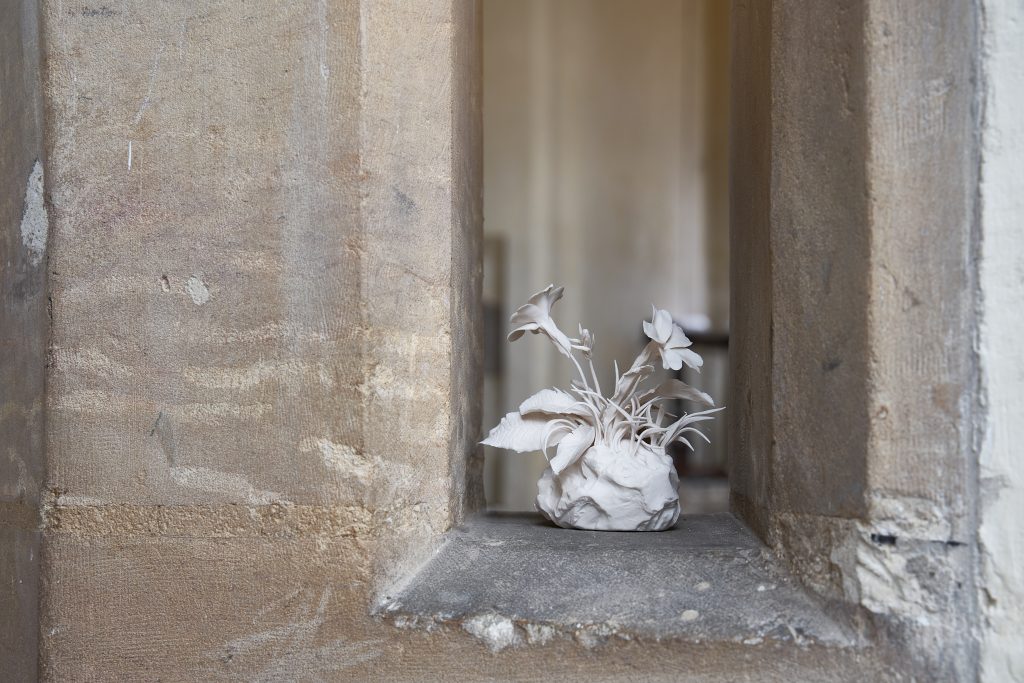
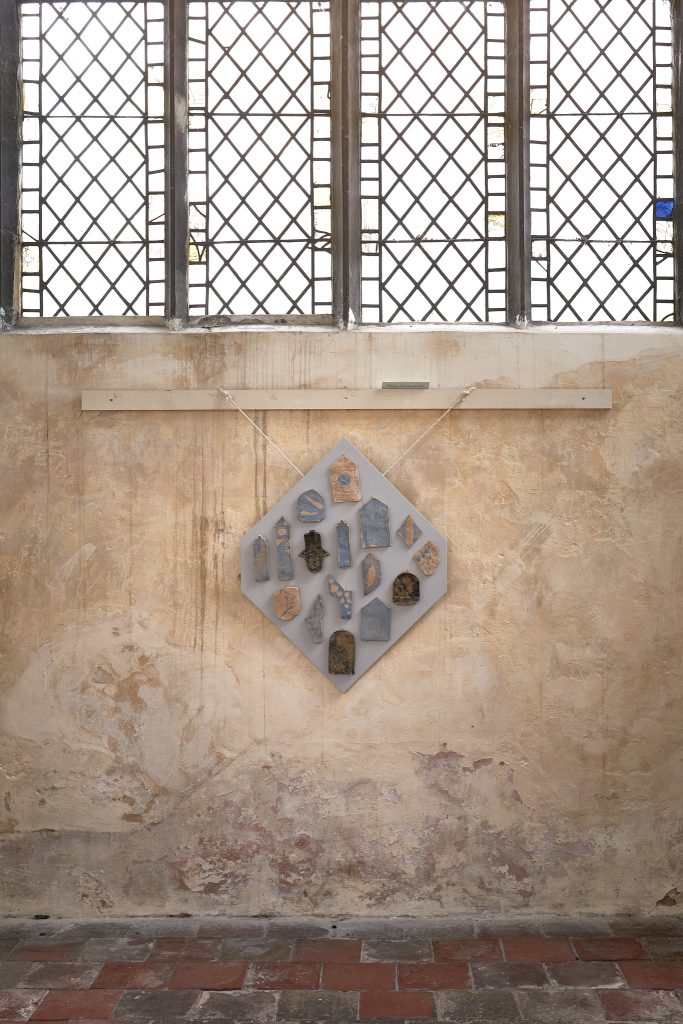
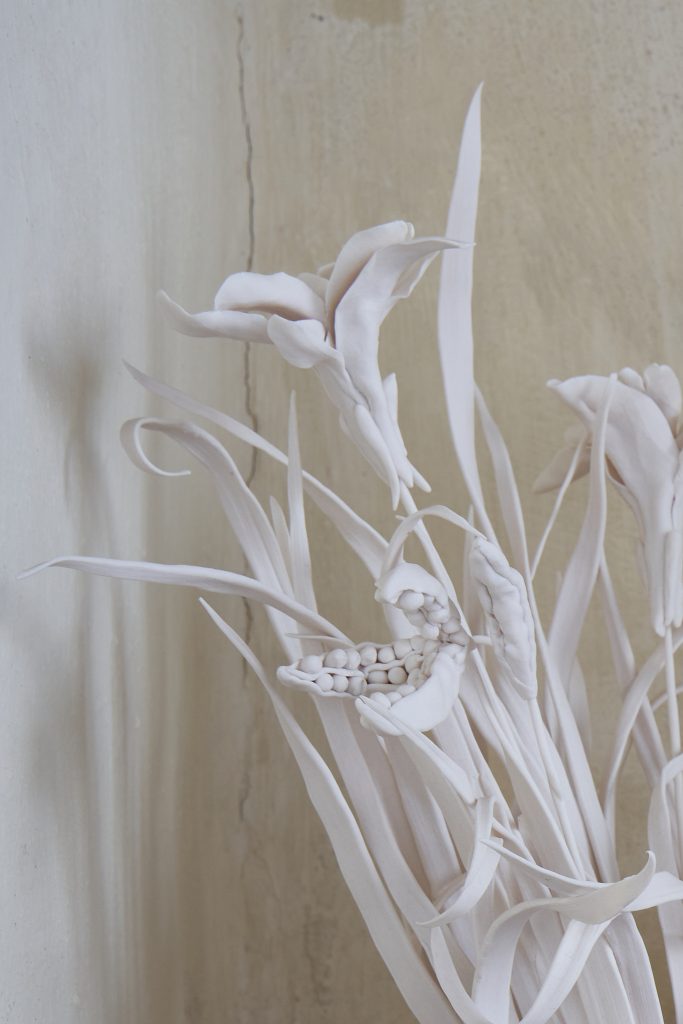
Katie Spragg: Plants, Porcelain, People, 2021
Hungate Medieval Church, Norwich, 2021
Plants, Porcelain, People was a collaborative project with artist, Katie Spragg in partnership with a group of young refugees through the Norwich based charity, Norwich International Youth Project and curator Caroline Fisher.
Between February and March 2021 artist Katie Spragg undertook a series of clay workshops with young refugees and asylum seekers, taking as inspiration the ways in which plants play a part in our lives. Exploring ideas of plants for food, healing and enjoyment, the young people have learnt with Katie techniques for creating sculptural objects in clay; expressing their thoughts on plants through their own imaginations. and thoughts on plants and the architecture of the church.
Following the workshops, the project included a period of making for Katie to realise a commission that was installed, alongside the young people’s work, at St Peter Hungate church in Norwich.
Inspired by the medieval history of the church and global traditions of medicinal plants, this project brings together ideas around healing, care and community. The artworks produced by Katie and the young people from Norwich International Youth Project respond both directly and indirectly to the church building and the plants growing in the churchyard. Plants represent universal use and understanding across international borders as well as being symbols of hope, resilience and defiance, growing from cracks in walls or sprouting from buildings.
In making the commission, Katie was influenced by Medieval Herbals; the compositions, stylised representations of plants and muted palettes of greens and reds;
“I was interested in the way fact and fiction seemed blurred in these documents, but also that this didn’t matter, different types of knowledge merge in the meetings of plant and human worlds”.
Each plant featured in the ceramic sculptures and tiles could be found growing in the churchyard when Katie visited in March 2021 and through her research she found that at some point in history all of the plants had some medicinal quality assigned to them, even if now they are known to be poisonous.
Photo captions
- Hungate Herbal, 2021 (daisy detail), coloured porcelain, underglaze, brass, 23x12x140cm, Photographer Chris Roberts
- Hungate Herbal, 2021 (in Hungate Church), coloured porcelain, underglaze, brass, 23x12x140cm, Photographer Chris Roberts
- Hungate Herbal, 2021, coloured porcelain, underglaze, brass, 23x12x140cm, Photographer Chris Roberts
- Hungate Herbal, 2021 (Hellebore detail), coloured porcelain, underglaze, brass, 23x12x140cm, Photographer Chris Roberts
- Norwich International Youth Project, collaborative nature plaque (installation shot), 2021, buff clay, oxides, glaze, wood, 38x32x5cm, Photographer Chris Roberts
- Norwich International Youth Project, collaborative nature plaque, 2021, buff clay, oxides, glaze, wood, 38x32x5cm, Photographer Chris Roberts
- Picsine (installation shot), 2021, porcelain, 36x22x38cm Photographer Chris Roberts
- Picsine, 2021, porcelain, 36x22x38cm, Photographer Chris Roberts
- Primrose and Cold Architecture, 2021, porcelain, 10x11x11cm, Photographer Chris Roberts
- Norwich International Youth Project, architecture, pattern and nature tiles, 2021, buff clay, slips, oxides, glaze, wood, 65x65x5cm, Photographer Chris Roberts
- Picsine (detail), 2021, porcelain, 36x22x38cm Photographer Chris Roberts



